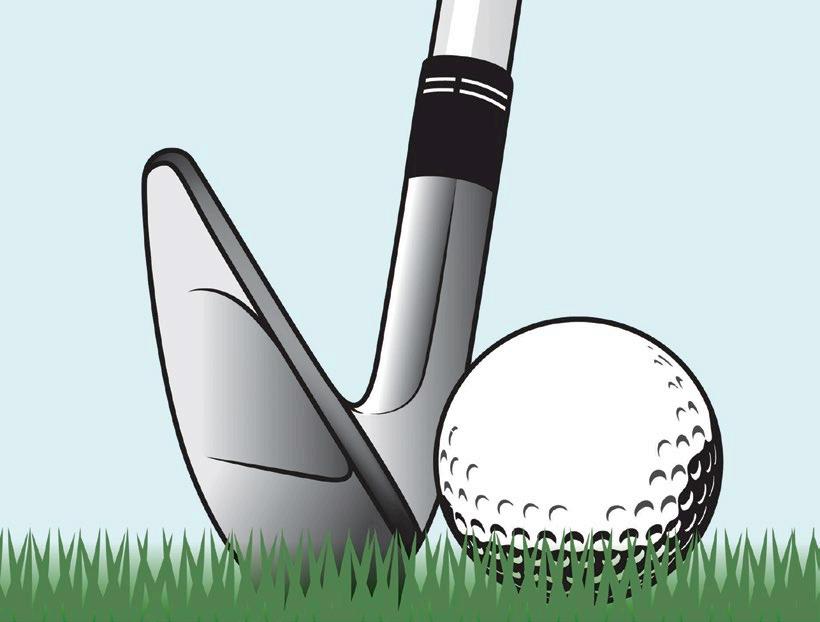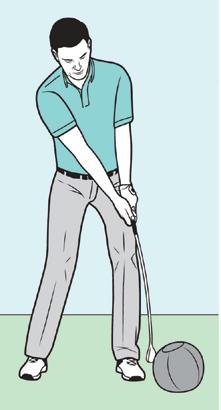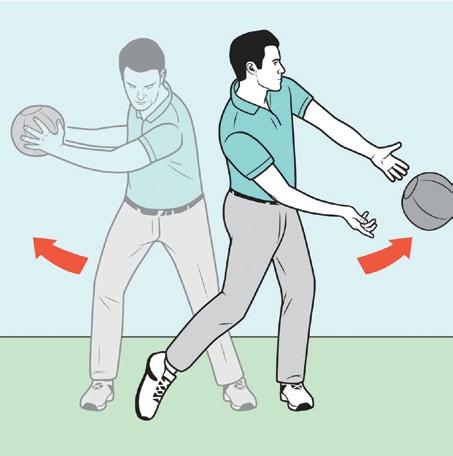
4 minute read
Swing Science
The Facts of Attack Testing shows how to get the most from your irons
BY RON KASPRISKE
IF YOU’RE NOW pulling a 6-iron out of the bag where you used to reach for an 8, your lack of power likely has something to do with your angle of attack, says Gene Parente, president of Golf Club Laboratories in San Diego. “If you want your irons to perform better, you probably need to hit down on the ball more,” he says.
It’s a conclusion reached after Parente did some testing, calibrating his golf-swing robot to hit iron shots off the ground from three angles of attack at two different swing speeds (80 and 92 miles per hour). Parente found that hitting down on the ball at 7 degrees, which is typical of a tour pro’s attack angle, would give the average golfer 10 to 23 more carry yards with a 7-iron and 16 to 26 more total yards. The other two angles tested were -1 and +2, common amateur approaches into the golf ball with an iron.
And that’s 10 yards with a lower trajectory and less spin, meaning better accuracy because the ball is less susceptible to weather (see the chart for more details). For years golf instructor Bobby Clampett has been telling students to strike down on the ball with their irons, and continue swinging downward until the club reaches its lowest point about four inches in front of where the ball was at impact. That’s what tour pros do, and it’s the reason they can hit 7-irons 200-plus yards. “A 7-iron for them is like a 4-iron for an amateur,” he says.
On the next page, Clampett will give you advice and a couple of drills to turn your +2 or -1 into a -7.
You don’t have to swing harder to pick up 26 yards.
avoid shortcuts
▶ If you want a more downward angle on iron shots, you could move the ball back in your stance, narrow your stance, or swing with more weight on your lead foot. But Clampett says those things won’t help create the type of compressed iron shot the robot was making. Instead, he says work on a more athletic move with your lower body that allows the club to lag behind the arms and the body’s rotation toward the target. A great way to train this move is to grab a medicine ball, simulate a backswing and through-swing, and toss it forcefully toward a target. “The heavier the ball, the more you have to rely on your legs and core muscles to throw it,” he says.


create compression
▶ Having a flat lead wrist as the club meets the ball with the golf shaft leaning forward is key to getting a quality angle of attack and a swing bottom in front of the ball, Clampett says. To feel what you need to do to compress irons off the turf the way tour pros do, put a medicine ball on the ground and set your club directly behind it. Without using your arms or hands, make the ball move toward your target with the club. This teaches you how to use body rotation and leverage from the ground to power your swing.
swing path matters
▶ Gene Parente set the robot to hit shots that were no more than a couple of yards off line, but the swing path changed depending on the angle of attack. For the +2 and -1 degree attack angles, the club was moving out to in by as much as 5 degrees, but the -7-degree swings had the club moving in to out in relation to the target by as much as 3 degrees. Interesting considering the widely held notion that an in-to-out path creates a shallower angle of attack. Clampett says you can still hit down on the ball significantly if you swing in to out, so long as the path is propelled by body rotation and not simply chopping down on the ball with an arm-dominated swing. 80 mph
angle of attack carry yards total yards launch angle ball spin
92 mph










